 Copyright Copyright 2017 by NuiNui NuiNui is a registered trademark of Snake SA, Switzerland All rights reserved. Bibliographical NoteFabulous Modular Origami: 20 Original Models with Instructions and Diagrams, first published by Dover Publications, Inc., in 2018, is an unabridged English translation of the work originally published by NuiNui, Switzerland, in 2017. International Standard Book NumberISBN-13: 978-0-486-82693-6ISBN-10: 0-486-82693-7 Manufactured in the United States by LSC Communications 82693701 2018 www.doverpublications.com Texts and diagrams Tomoko Fuse Photographs Dario Canova
Copyright Copyright 2017 by NuiNui NuiNui is a registered trademark of Snake SA, Switzerland All rights reserved. Bibliographical NoteFabulous Modular Origami: 20 Original Models with Instructions and Diagrams, first published by Dover Publications, Inc., in 2018, is an unabridged English translation of the work originally published by NuiNui, Switzerland, in 2017. International Standard Book NumberISBN-13: 978-0-486-82693-6ISBN-10: 0-486-82693-7 Manufactured in the United States by LSC Communications 82693701 2018 www.doverpublications.com Texts and diagrams Tomoko Fuse Photographs Dario Canova  INTRODUCTION
INTRODUCTION  Among the many joys of making origami, there is one in particular that makes modular origami stand out: its distinctive geometric component. However, this does not necessarily mean that it has to be difficult. There are plenty of simple and stimulating models that are easy to understand and can be made by anyone. Modular origami involves joining different modules made with sheets folded separately.
Among the many joys of making origami, there is one in particular that makes modular origami stand out: its distinctive geometric component. However, this does not necessarily mean that it has to be difficult. There are plenty of simple and stimulating models that are easy to understand and can be made by anyone. Modular origami involves joining different modules made with sheets folded separately.
What is unusual about it is precisely the fact that it requires two different types of processes, namely folding and assembly. One intriguing aspect of this type of origami comes from the fact that glue is not normally used to join the modules together. However, if you need to strengthen a model, do not hesitate to glue it. This book contains a wide range of models, from the easiest, made using only two modules, to those for more expert origami artists that can require up to thirty modules. I hope this book will help you discover the two different layers of enjoyment modular origami can bring: the inherent pleasure in the creative process involved in making every piece of origami, and the fun of a jigsaw puzzle.  SUMMARY
SUMMARY 


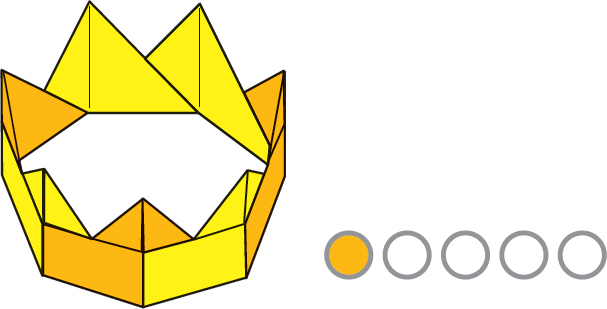




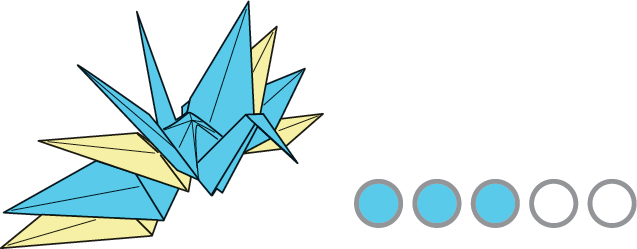
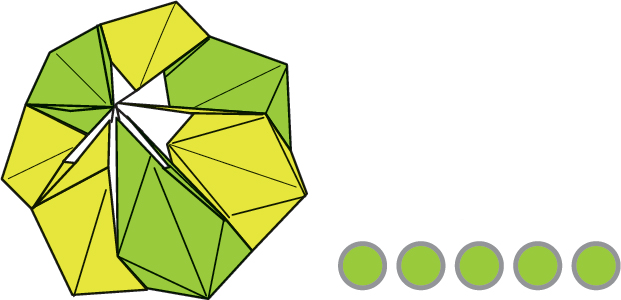









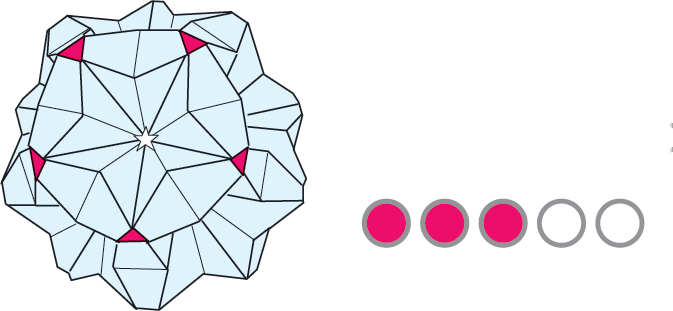 BIOGRAPHY Tomoko Fuse first came across origami when she was seven years old; she began making paper models during a stay in the hospital.
BIOGRAPHY Tomoko Fuse first came across origami when she was seven years old; she began making paper models during a stay in the hospital.
In 1980, well ahead of her time, she became so passionately dedicated to making origami models, using several sheets folded separately, that she earned the nickname the queen of modular origami. Constantly experimenting with new ways of folding paper, she began to focus on making geometric shapes and even designed industrial products such as lampshades and the collection of Origami Pots. 1951 She is born in the province of Niigata. She graduates in Garden Design from the University of Chiba. 1986 She moves to Yamamura Yasaka, in the province of Nagano, and begins practising origami professionally. 1989 On behalf of the Japan Foundation, she visits the UK, Germany, Holland, Poland and Bulgaria. 1990 She is invited by Origami USA (the American National Association for origami). 1991 She is invited by various organisations and associations to Paris, Germany and Spain. 1994 She organizes the second OSME (an international scientific origami convention) that takes place in Otsu, making a valuable contribution to the success of the event. 1998, 2000, 2003 She is invited to the Festival of Origami in Charlotte, USA. 1998 She is one of three Japanese origami artists invited to exhibit at the Paris origami exhibition held at the Louvre. 1999 She is invited by the Canada Origami Group and the Japanese-German Association. 2002 She is invited to exhibit at the On Paper exhibition, held in the UK with sponsorship by the Crafts Council. 2002 She is invited to exhibit at the On Paper exhibition, held in the UK with sponsorship by the Crafts Council.
At the third OSME, which takes place in America, she presents Origami Pots, the result of research conducted with three other colleagues. In the same year, Origami Pots receives a patent. 2003 She is invited to exhibit at the Origami exhibition, held at the American Folk Art Museum. 2004 In April, she holds a solo exhibition in Israel, at the Hankin Gallery. In September, she holds another solo exhibition in Germany, at the Bauhaus, and is invited by the British Origami Society. 2006 She is invited by the Indian Origami Association. 2008 She is a guest at the general conference held on the occasion of the 25th anniversary of the Dutch Origami Association. 2009 She holds the Yorokobi (Happiness) exhibition in Germany, alongside her husband, an artist working with wood. 2010 In March, she is invited by the origami associations of Colombia and Brazil. 2010 In March, she is invited by the origami associations of Colombia and Brazil.
In August, she is invited by the Ohio CenterFold. In September, she exhibits her origami at the Tokyo Yurakucho Forum. In October, in Germany, to celebrate the centenary of the Frbel Museum, she once again holds the
Next page

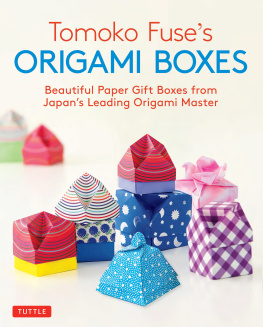
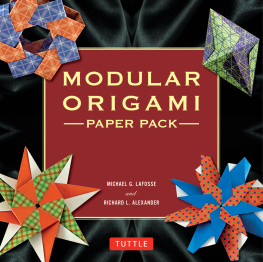

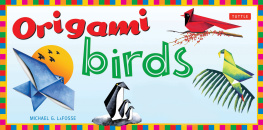
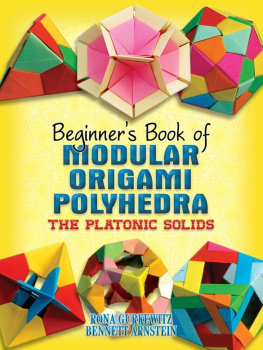

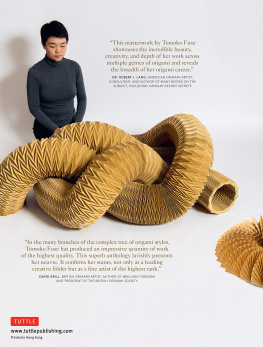
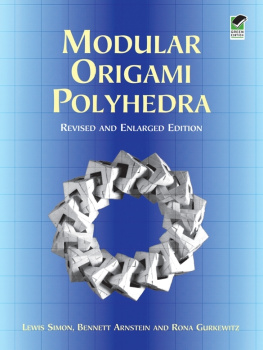
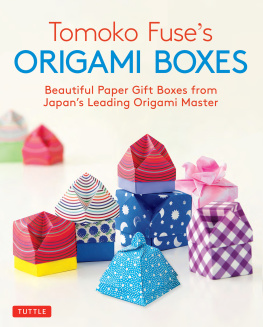

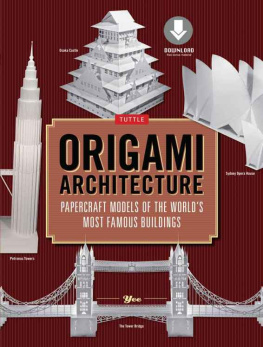
 Copyright Copyright 2017 by NuiNui NuiNui is a registered trademark of Snake SA, Switzerland All rights reserved. Bibliographical NoteFabulous Modular Origami: 20 Original Models with Instructions and Diagrams, first published by Dover Publications, Inc., in 2018, is an unabridged English translation of the work originally published by NuiNui, Switzerland, in 2017. International Standard Book NumberISBN-13: 978-0-486-82693-6ISBN-10: 0-486-82693-7 Manufactured in the United States by LSC Communications 82693701 2018 www.doverpublications.com Texts and diagrams Tomoko Fuse Photographs Dario Canova
Copyright Copyright 2017 by NuiNui NuiNui is a registered trademark of Snake SA, Switzerland All rights reserved. Bibliographical NoteFabulous Modular Origami: 20 Original Models with Instructions and Diagrams, first published by Dover Publications, Inc., in 2018, is an unabridged English translation of the work originally published by NuiNui, Switzerland, in 2017. International Standard Book NumberISBN-13: 978-0-486-82693-6ISBN-10: 0-486-82693-7 Manufactured in the United States by LSC Communications 82693701 2018 www.doverpublications.com Texts and diagrams Tomoko Fuse Photographs Dario Canova  INTRODUCTION
INTRODUCTION  Among the many joys of making origami, there is one in particular that makes modular origami stand out: its distinctive geometric component. However, this does not necessarily mean that it has to be difficult. There are plenty of simple and stimulating models that are easy to understand and can be made by anyone. Modular origami involves joining different modules made with sheets folded separately.
Among the many joys of making origami, there is one in particular that makes modular origami stand out: its distinctive geometric component. However, this does not necessarily mean that it has to be difficult. There are plenty of simple and stimulating models that are easy to understand and can be made by anyone. Modular origami involves joining different modules made with sheets folded separately. SUMMARY
SUMMARY 


















 BIOGRAPHY Tomoko Fuse first came across origami when she was seven years old; she began making paper models during a stay in the hospital.
BIOGRAPHY Tomoko Fuse first came across origami when she was seven years old; she began making paper models during a stay in the hospital.